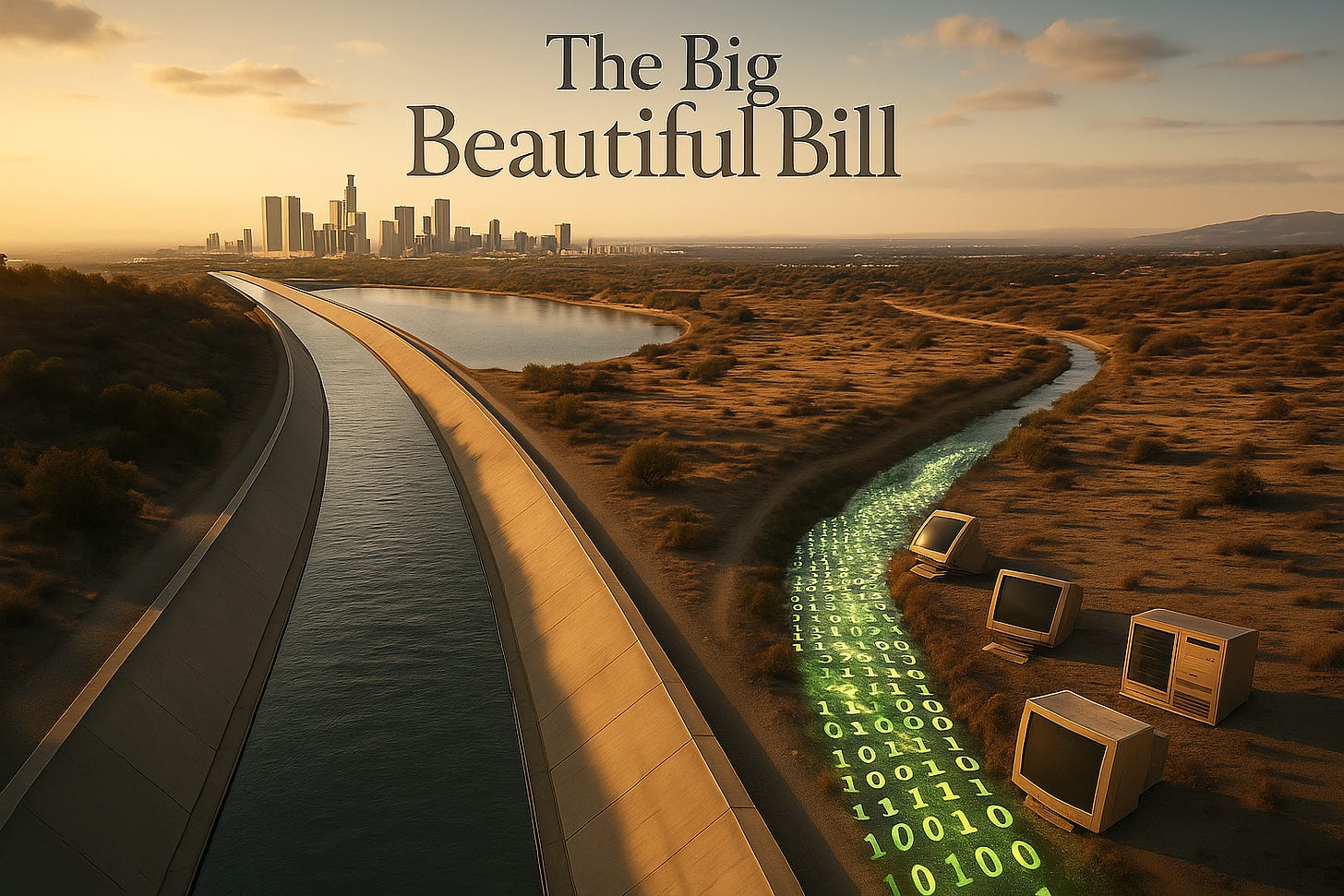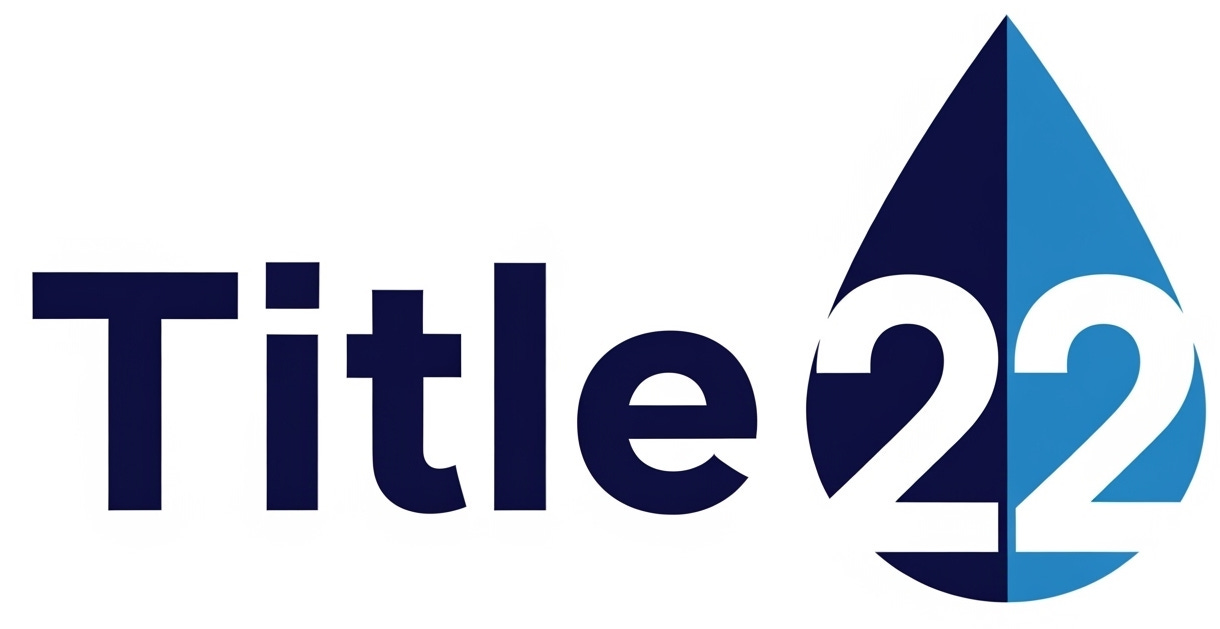The "Big Beautiful Bill"
What Water Professionals Need to Know About H.R. 1's Impact on Funding
Informally referred to as the "Big Beautiful Bill," the new legislation brings a wave of contradictory changes to the water sector. Here’s a breakdown of what you need to know.
It’s not often that a single piece of legislation sends such mixed signals to an entire industry. But the newly passed H.R. 1 - 119th Congress does exactly that. A close reading of the bill reveals a significant policy pivot for the water sector, creating clear "winners" and "losers" by funding massive traditional infrastructure projects while simultaneously slashing support for the green, climate-focused, and data-centric programs that have gained prominence in recent years.
For water professionals planning the next decade of projects, understanding this shift isn't just important—it's critical. This article will break down the specific provisions that matter most, focusing on the practical effects for the industry.
The Winners: A Focus on "Hard" Infrastructure and Traditional Projects
The clearest beneficiaries of H.R. 1 are entities focused on building or restoring large-scale, conventional water projects. The bill injects significant capital and streamlines approvals for "hard" infrastructure.
Massive Capital Injection for Storage and Conveyance
The headline item for the water sector is found in Sec. 50501, which appropriates a massive $1 billion to the Bureau of Reclamation. This funding, available until 2034, is earmarked specifically for the construction, restoration, and enhancement of water conveyance systems like canals and pipelines, as well as surface water storage facilities like reservoirs. For utilities looking to improve water supply reliability through major capital works, this represents a direct and substantial federal funding opportunity.
The Fast Lane for Project Approvals
For project sponsors, time is money. Sec. 60026 fundamentally alters the National Environmental Policy Act (NEPA) review process by allowing project sponsors to pay a fee to expedite reviews. For projects that opt-in, this provision sets hard deadlines of 1 year for an Environmental Impact Statement (EIS) and 180 days for an Environmental Assessment (EA). While potentially controversial, this could dramatically accelerate the timeline for utilities planning major infrastructure upgrades.
A Boost for Source Water Protection
In a surprising bright spot within a bill characterized by many cuts, Sec. 10601(e) amends the Watershed Protection and Flood Prevention Act to increase its authorized funding from $50 million to $150 million annually. This represents a direct, long-term investment in the health of the watersheds that are the source of our drinking water and is a clear win for proactive water quality management.
The Losers: A Retreat from Green, Climate, and Data Initiatives
While "gray" infrastructure gets a boost, the bill systematically defunds programs that support modern, sustainable, and data-intensive approaches to water management.
Green Infrastructure and Climate Resilience Takes a Hit
Multiple provisions in the bill combine to reduce federal support for green infrastructure. The repeal of the Greenhouse Gas Reduction Fund (Sec. 60002) is a major blow, as this was a key potential funding source for projects like green stormwater infrastructure and water recycling. This is compounded by the rescission of Low-Carbon Transportation Materials Grants (Sec. 60024), which directly defunds support for tools like permeable pavements, and the rescission of Neighborhood Access and Equity Grants (Sec. 60019), another potential source for urban greening projects. Finally, the elimination of Climate Justice Grants (Sec. 60016) removes resources for disadvantaged communities facing critical water-related environmental challenges.
Data-Driven Water Management is Defunded
In a move that runs counter to the industry's push for smarter, more data-informed operations, Sec. 60018 rescinds funding for environmental and climate data collection. This impairs the ability of federal agencies and, by extension, local utilities to monitor water quality on a national level, track long-term trends, and identify emerging threats. The practical effect is a greater data collection and analysis burden on local and state entities.
A Contradiction in Environmental Reviews
A fascinating contradiction emerges from the bill's approach to environmental reviews. While Sec. 60026 allows sponsors to pay for speed, Sec. 60023 rescinds federal funds that were meant to make the review process more efficient for everyone. This may inadvertently create a two-tiered system where only well-funded projects can afford to get through the process quickly, while others may face a system with even fewer federal resources for efficient review than before.
Conclusion: Navigating the New Strategic Landscape
Reading between the lines, H.R. 1 signals a distinct policy pivot. It prioritizes large, centralized, concrete-and-steel solutions to our water challenges over the decentralized, green, and data-intensive approaches that have gained prominence.
This creates a new strategic landscape for water professionals. Utilities with major "gray" infrastructure projects are now well-positioned to seek federal funding and faster approvals. However, those focused on innovative stormwater solutions, climate adaptation, or data-driven management will need to find alternative resources and strategies.
This legislation forces us to confront some difficult questions about the future of our industry:
With federal support for green infrastructure shrinking, how will utilities meet the growing challenge of urban stormwater management?
Is the trade-off of faster project approvals worth the potential for less rigorous environmental review?
As federal climate data programs are scaled back, how will the water sector adapt to plan for a more uncertain future?
I’m keen to hear your perspective on how this will impact your work. Let’s discuss it in the comments.




